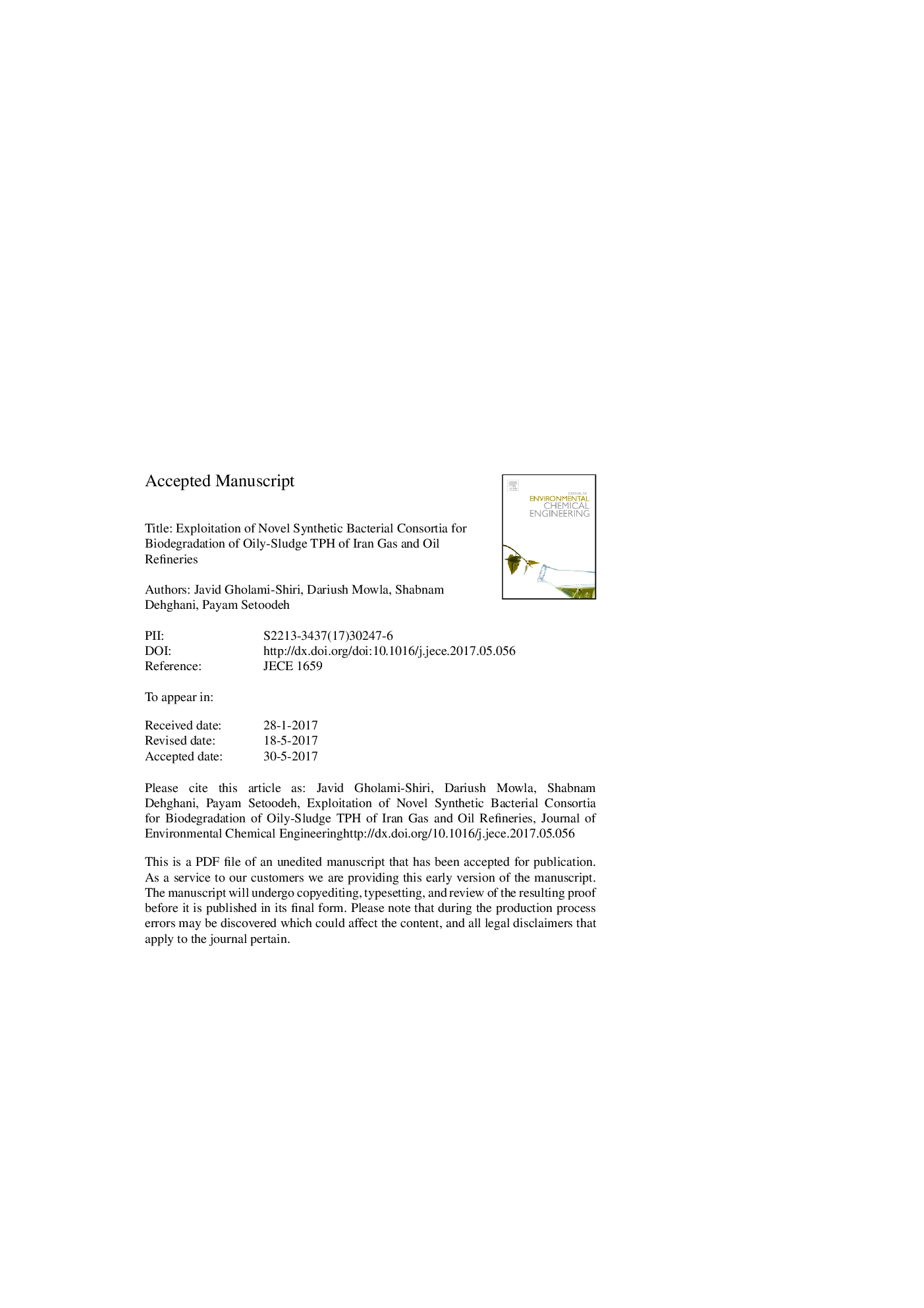| Article ID | Journal | Published Year | Pages | File Type |
|---|---|---|---|---|
| 4908443 | Journal of Environmental Chemical Engineering | 2017 | 39 Pages |
Abstract
The main aim of this study is to examine the effects of exploitation of synthetic combination of indigenous and exogenous bacteria on biodegradation of South Pars gas refineries' (SPGRs) oily sludge contaminants in liquid and soil media during a 60-day time period. To the best of authors' knowledge, this is the first time that the capabilities of Staphylococcus spp., Lysinibacillus fusiformis, and Citrobacter amalonaticus for degradation of petroleum compounds are uncovered. One of the most important achievements of the combined consortium, is the additional reduction of the broth surface tension due to biosurfactants production. Results show that the combined consortium has the highest biodegradation ability in 1% (w/v) oily sludge supplied mineral salt and soil media by respectively 81.0% and 71.2% through biostimulation + bioaugmentation techniques. It is also observed that adding exogenous bacteria to indigenous ones contributes to increase of oily-sludge degradation by 11.4% in liquid media and 17.6% in soil. Finally, addition of exogenous bacteria resulted in significant increase of removal percentage of alkanes, aromatics, and asphalthene + resins contaminants in liquid and soil media.
Related Topics
Physical Sciences and Engineering
Chemical Engineering
Chemical Engineering (General)
Authors
Javid Gholami-Shiri, Dariush Mowla, Shabnam Dehghani, Payam Setoodeh,
